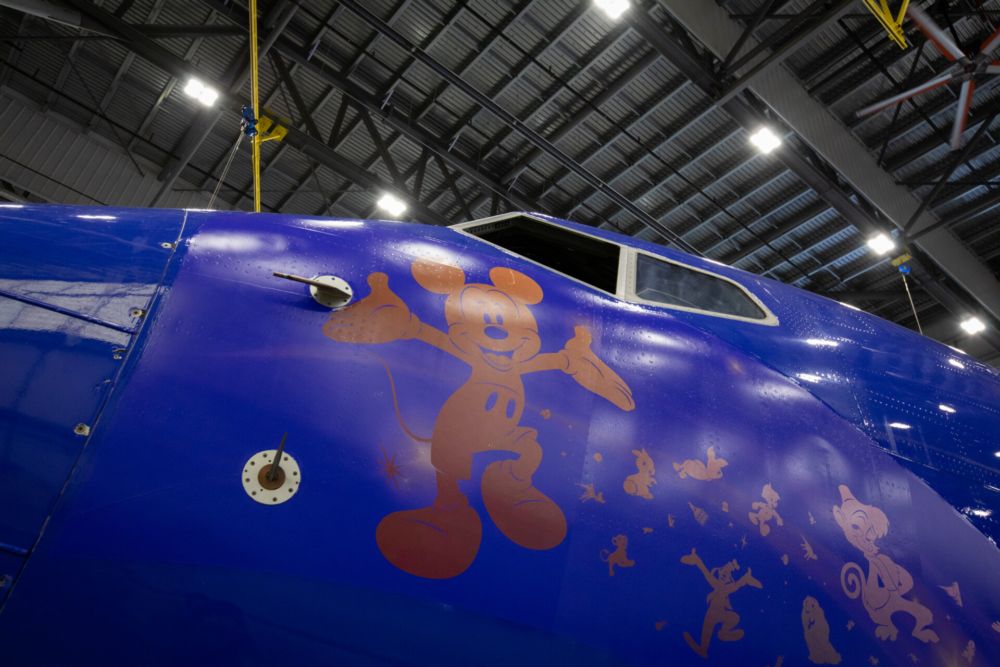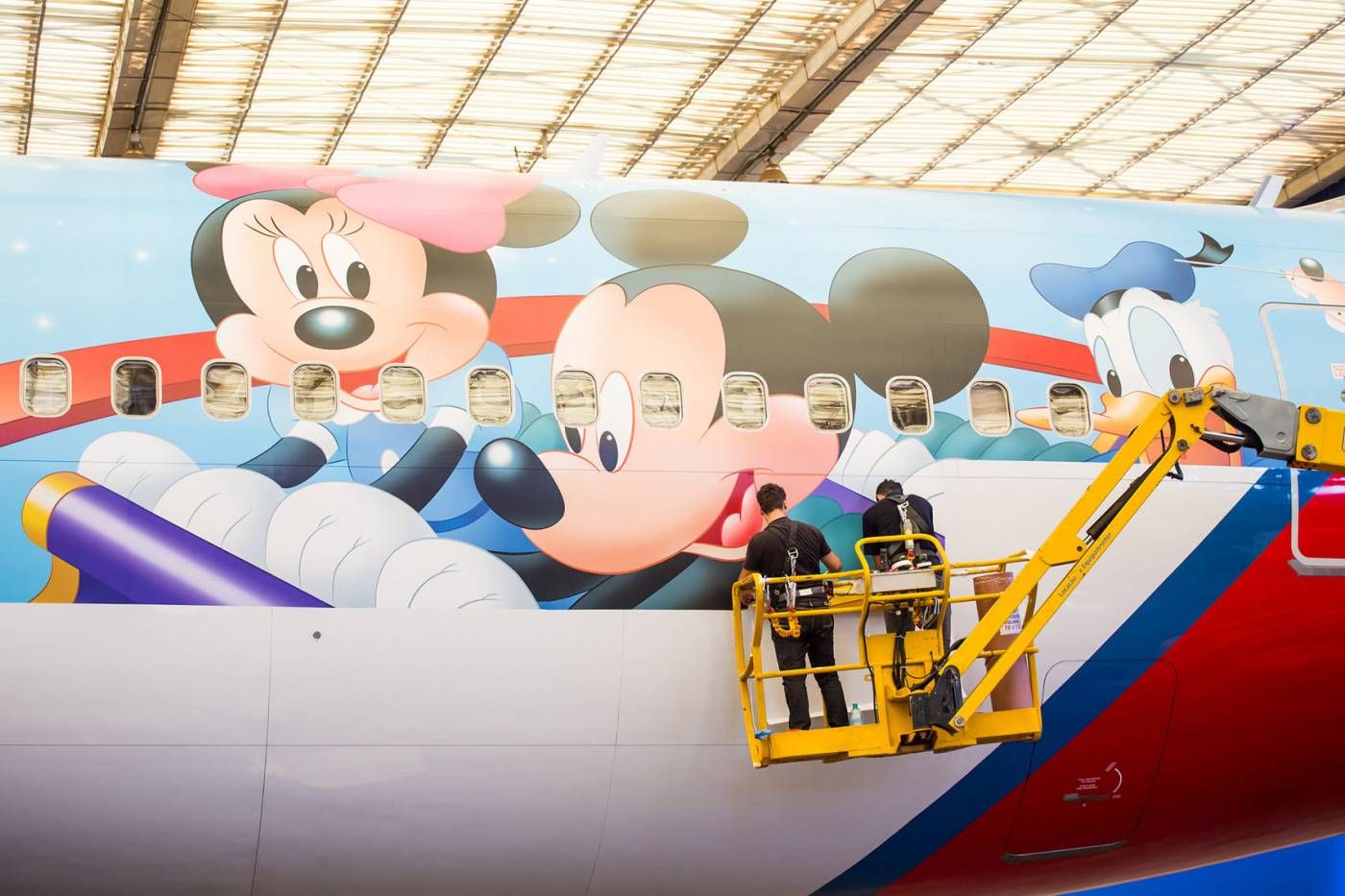One of the strongest representations of an airline’s brand is its aircraft and the bold livery that they wear. Seeing the colorful tailfins at an airport is one of the biggest joys of travel, and instantly engages us with the airlines and their presence on the apron. Sometimes, if we’re lucky, we’ll even catch a glimpse of a special livery, designed to celebrate a particular event, or as part of a tie-up with another brand or product.When aircraft receive their permanent livery, it tends to be painted on. This is a long and expensive process, costing tens of thousands of dollars, often taking skilled crews of 15 people as long as ten days to complete. In the case of a re-livery following a merger or rebranding of the airline, this can be even more complex, requiring the previous layers of paint to be entirely stripped from the fuselage before the new design can be applied.But for some special liveries, such as the new Disney design unveiled by Southwest yesterday, the process is much more straightforward. In this case, the airline chose to apply a decal using a vinyl wrap to give its aircraft a brand new look. Vinyl wraps can be applied much more quickly, with no need to strip the paint first. There’s practically no drying time required, and a layer of vinyl is significantly less weighty than several layers of paint. So if vinyl is so quick and easy to deal with, why don’t more airlines simply wrap their planes?
So if vinyl is so quick and easy to deal with, why don’t more airlines simply wrap their planes?
The challenges of a vinyl wrap
Wrapping has become incredibly common in the car world, with owners choosing to wrap their vehicles to give them a new look, or to protect the paintwork underneath from chips and corrosion. Because vinyl wraps are custom printed, they can sport much more complex designs that would otherwise require many hours of a skilled airbrush artist to create.
But aircraft are not cars, and they have to endure some much more aggressive environments than the typical roadgoing vehicle. Temperatures exerted on the aircraft’s surface can range from 40° C (104° F) or more at the airport to as low as -55° C (-67° F) at 40,000 feet. As well as this, the fuselage surface is continually battered by 500 mile per hour winds, and is subjected to a variety of chemicals ranging from engine exhaust to de-icing fluid.
Because of this, a vinyl wrap has to be applied with absolute precision. The aircraft skin may expand and contract with the temperature changes, so it has to be stretched to a significant degree to ensure a close fit. Teams of specialists will be required to stretch and pull the wrap into place, ensuring no loose edges or bubbles remain.
If something goes wrong with a vinyl wrap, it can be a significant safety hazard. Not so much if it’s just a partial decal, like the Southwest plane, but if the entire body was wrapped and that sheet became loose, that’s a huge piece of heavy vinyl flapping about that could seriously injure someone on the ground.
How long is it needed?
For temporary applications, vinyl wraps have been proven to be pretty resilient. Specialist companies like 3M have wrapped some of the world’s biggest planes, including the Boeing 747 Lord of the Rings plane. That plane sported its wrap for around seven years before being withdrawn from use and having its wrap removed.
Air New Zealand also had a Boeing 777-300ER wrapped in a ‘Hobbit’ livery to celebrate the release of the film. You can watch some of the application process in the timelapse video below.
But ZK-OKO, although it sported an impressive 830 square meter wrap, was still a way off being a fully wrapped plane. It also only flew for just over two years with this huge wrap, before being returned to its regular livery.
While wrap technology may well be suited to smaller, general aviation aircraft, entirely wrapping a plane is still a rather onerous prospect. As such, very few aircraft have had large wraps applied, and any that do tend to have them removed not too long after. Wrapping is a great way to apply a temporary decal or a smaller, intricate piece of artwork to a plane, but for protection, longevity and a perfect finish, paint is still the premium choice.

